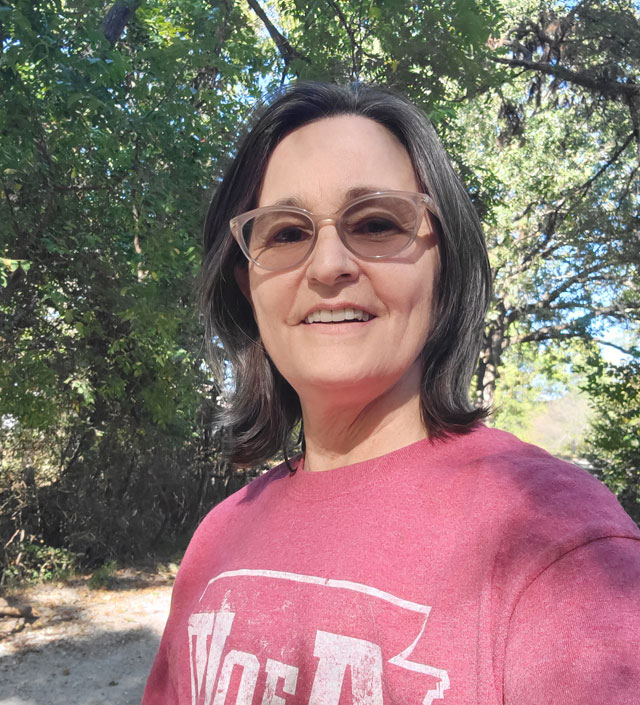When advisor Sheryl Garrett, CFP, and I spoke days after hundreds of motorists were stranded overnight on a snowy stretch of Interstate-95 in Virginia early this year, she mentioned the lack of preparedness despite a similar occurrence a few years back. She recently brought up this storm again during a broader conversation we had about how ill-prepared many people are for financial and physical risks that are more common than many people realize or care to admit.
Garrett, founder of the Garrett Planning Network, says she has also recently raised the topic of risk at several monthly town hall conversations for her network (which has approximately 230 advisor members nationwide) and during new-member calls.
“I’ve gotten on my soapbox and summarized these risks,” she says, and asked advisors, “Are we having these conversations?”
Not addressing them with clients can put even the best financial plans in jeopardy, she says.
In denial
What “was really eye opening,” says Garrett, is what a couple of advisors from Florida told her when she asked what clients and prospects were “asking and saying and feeling” about climate-related issues there, which include rising sea levels and intense storms. “They are less concerned about their plight than people outside of Florida.”
“The same thing with people in the West. Talk to people in Phoenix or Las Vegas, and they have the water situation under control,” she says. But while these cities have taken some measures to deal with drought, this isn’t a short-term problem or fix.
“Wherever in the desert you happen to be, have you discussed [with clients] if there’s any need or desire for landscaping, or re-landscaping, to comply with the cities’ ordinances?” says Garrett.
And it’s not just the West and Florida facing extreme-weather events. Five areas of the country experienced 1,000-year flood events between late July and late August, she notes.
Who’ll care for mom and dad?
Climate is just one area that Garrett is concerned people aren’t properly planning for. Longevity is another.
“Folks, when did we forget about risk?” she says. “We need to be thinking about — I can’t even call it risk — what’s the likelihood of one or both of your parents needing financial or physical assistance in the future?”
“Very often, the response is, ‘Not sure.’ Well, if you’re not sure you’ve got a homework assignment: Talk to your parents and then talk to your siblings and begin to come up with a plan for mom and dad should they need assistance.”
The answer could be a long-term-care insurance policy, she says, but not always.
“My father couldn’t qualify for one. He got one for my mother and then two years later, he cancelled it because he’s very, very frugal — even though it was a very wrong thing to do,” says Garrett. Fortunately, he was able to care for his wife when she needed long-term-care.
“We got lucky. He got lucky. And now I’m here taking care of him,” says Garrett. “That’s part of our family plan, and it’s been that way for 50 years.”
“Still, it’s something we have to think about and talk about [with clients] and not let it sneak up a year or two before it happens, or worse yet, as it happens,” she says.
Politics aside
Political beliefs drive some of the inertia regarding risk factors, particularly with climate change.
“Many of us have serious hang-ups or are blocked in our ability to move forward because of the climate crisis: Do we put it in air quotes or is it really happening?” says Garrett.
“But whether we refer to it as climate change, climate crisis or just weather-related problems,” she says, “in my opinion, it’s the single most important long-term subject that most of our planning needs to focus on.”
“I’m concerned about inflation because of climactic events and also the Ukraine situation and China. China seems to be falling apart with the climate issues, and then you throw in those major internal waterways — talk about supply chain gridlock,” she says.
Meanwhile, should the conflict escalate between China and Taiwan, getting goods that aren’t manufactured nearby are “going to take a while, a long while, or it’s going to cost you a lot more,” she says. And with the invasion of Ukraine and drought conditions in the Central U.S. and Canada, she says, “We’re in for commodity prices out the imagination.”
“That’s what we planners, advisors are trying to foresee: What bad things could happen and how do we prepare for that potentiality or inevitability, however strong you want to put it,” she says.
If someone blames inflation on the current administration, she listens and then tells them the reasons why she is concerned about inflation. “And once they hear my line of thinking, they might go, ‘Oh, that too.’” The bottom line is, “People talk about this as politics, but we’re going to have inflation, storms and droughts regardless of who is in office,” she says.
As for her own politics, “I’m a very conservative tree hugger,” she says. “Don’t think I’m a freewheeler when it comes to spending anybody’s money or raising taxes of lowering taxes. I just want the best thing for my clients.”
Additional reading: When Politics Threaten Relationships and Retirement
The psychological component
Garrett is also very interested in the social and psychological aspects of how people evaluate risk. Much has been written about the psychology of climate change. She recently watched a documentary that explained that humans tend to ignore climate change risk if they see others around them ignoring it. “We think it’s normal and we normalize things so much,” she says.
Advisors need to be aware of whether or not members of their clients’ communities are concerned about climate change, says Garrett. “The people that have the hardest work to do are going to be those advisors that are in locations like Tucson or Phoenix” or other places where climate change is rampant but largely ignored.
She thinks it’s even more difficult to bring up the subject with clients who’ve spent their life dodging extreme weather events, she says.
For example, she says, “You have a client in his 70s or 80s, who says, ‘I’ve lived here or my ancestors have lived here for so many generations. I mean, I’ve heard about the big one [a massive hurricane] all these years. It gets bad, it gets better.’”
Her response? “You’re absolutely correct. But let’s just pretend that your home is destroyed, for whatever reason. Fire, the next-door neighbor kid, whatever — your home is now gone. Does your insurance cover it? And if it does, how long would it take to rebuild? Would you want to rebuild here? Let’s just dwell on that thought for a minute.”
The grim reality
Even if a client thinks their insurance policy will cover the damage and they’re adamant about continuing to live in their home, they may not be covered for certain risks.
For example, with earthquake coverage, most of the time you have to live in a precise location to receive that coverage, says Garrett. Earthquake insurance may also be denied “even If you have earth movement, like people in Oklahoma found out when they had cracked foundations and had to redo their entire basements for $50,000.”
Many Oklahomans could not file claims because small, individual events did not register as earthquake damage, she says. However, the cumulative damage of thousands of minor earthquakes in the state added up to hefty out-of-pocket expenses for homeowners.
Many policyholders in Oklahoma eventually received insurance settlements, but they waited for years.
“These are the risks that we as planners need to think about, in every community,” says Garrett, from the I-95 snowstorm to French drains.
“I’ve heard from three people lately: ‘Remember such and such year when we had all that rain in the desert?’ They had water inside their front door. Did you do anything to the landscaping so it didn’t happen again? ‘No.’ Do you need to hire somebody? ‘Oh, no, I don’t think we need to worry about it.’ Did it cost anything or did you have a lot of hassle with it?”
“Sometimes I can ask so many questions that eventually people will give up and say, ‘OK, we’ll look into it, Sheryl!’” Garrett says. “I don’t want to sound like a worrywart, but I want to sound very thorough: ‘Let’s check off all the boxes and then you’re free to go.’”
Up close and personal
Climate change risk has also infiltrated Garrett’s inner circle. Her brother and two of her friends/former colleagues face ongoing drought issues.
Her brother, who lives in California’s Central Valley, has had to truck in water for years, maybe even a decade, she says. A couple hundred miles away on California’s Mendocino Coast, a friend (a retired advisor) bought a home and its well went dry her second year there, says Garrett. “She can’t drill a new one; she has to have water brought in.”
Her other friend and that friend’s husband own a ranch in western Kansas and have really struggled with drought issues. “He was going to have to sell half of their herd of cattle because they weren’t able to grow any hay for the winter and it’s too expensive to ship in,” says Garrett. The day he was going to sell 225 cows, the government announced it was giving a stipend so people could afford to get the feed shipped in, she says.
Meanwhile, more than 2,000 cattle in Kansas died of heat and humidity in June.
Thousands of dollars needed
Garrett points out that it costs a lot of money to drill a well. “$30,000 to $50,000, I hear. It depends on how deep and where and all that kind of stuff,” she says. “But, do you have that kind of money on hand? Most folks don’t.”
“So, something we planners need to think about is a cash reserve much bigger than what would normally be provided for.” The same goes to address the rising cost of property insurance in Florida.
“People are seeing their homeowners’ insurance go up $300 to $600 a month. They weren’t expecting that,” says Garrett. Labor and roofing materials shortages are also making it tougher for Florida homeowners who need new roofs that are insurable.
“We have a lot of risks out there, many of which if we think a little bit and plan a little bit we can mitigate or manage them,” she says, so they don’t become as unwieldy as they might’ve. [We didn’t even touch on wildfires, tornadoes or mudslides, which have all wreaked havoc in recent years.]
Personal plans
Garrett has also been giving a lot of thought to mitigating her own climate risks and reducing her carbon footprint.
She says she regrets that when she designed and built her house in Arkansas five years ago, she didn’t include a greywater handling system to collect and store gently-used water that runs down sinks and showers. You have to use biodegradable soap, she notes. Greywater, stored in underground tanks, can later be used for watering a garden or washing the car.
“I’m thinking seriously about doing rainwater harvesting. If that doesn’t prove to be ample, the next stage would be to capture greywater,” she says, although she notes that’s much easier if a house is initially designed that way.
Homeowners looking for a small water-conservation project can simply use a rake, a shovel and some rocks to put in little swales to capture some water for minor landscaping needs, she says.
Rubber boots and resilience
“At our update meetings with clients, we have to have something new to talk about, right? It used to be, ‘Oh, here’s your quarterly performance report on your investment portfolio,’” says Garrett. Well, discussing risks can make it worthwhile for clients to come in.
“I’m lumping them all as risks or perils, but there’s things that happen in life,” she says. So, how can clients plan ahead?
“Rubber boots, snow shovel, whatever is appropriate. For major life-changing events, maybe making sure that you have a couple of tens of thousands of extra dollars in cash reserves,” she says. “Or maybe you want to bring your horns in a little bit on the amount of risk that you’re taking in your investment portfolio, now that you realize all of the risk that you have in your life.”
There’s no need to “go way overboard, and move into a cave and put all of our money in God knows what, seeds, unless that’s what the client needs to do,” she says, but “we need to normalize” these conversations about climate risk and longevity risk.
“These are what I want planners to help people think about — their dreams and hopes and aspirations and fears,” says Garrett. “Let’s try to improve resilience. It starts with open-mindedness and preparedness discussions.”
Jerilyn Klein is editorial director of Rethinking65.






